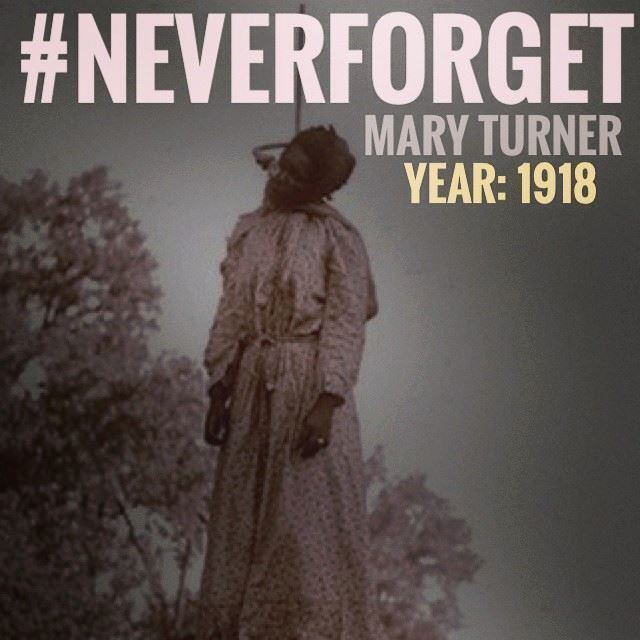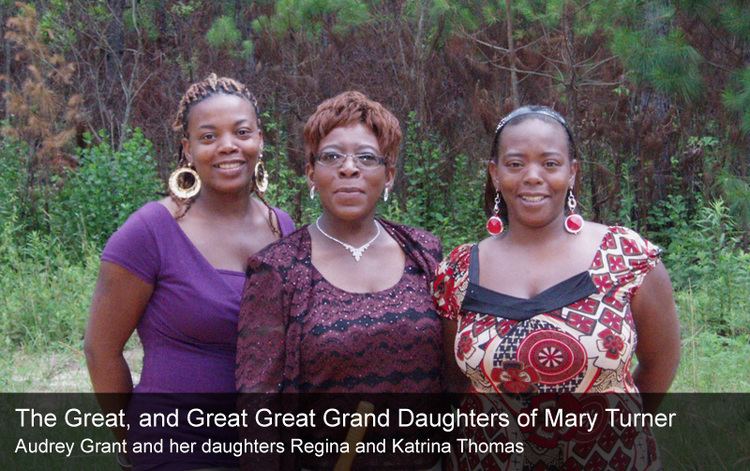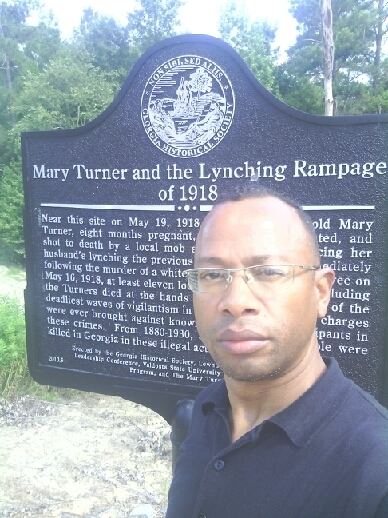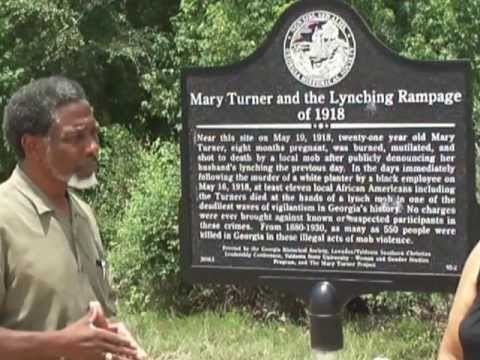Name Mary Turner | ||
 | ||
Died 1918, Lowndes County, Georgia, United States People also search for Charles Roe, Sam Hose, Elizabeth Lankford, Rachel Harriott | ||
Mary turner lynching the week of terror in brooks lowndes county georgia
Mary Turner (1899 - 19 May 1918) was a nineteen-year-old black woman, lynched in Lowndes County, Georgia. Eight months pregnant, Turner and her child were murdered after she publicly denounced the unlawful extrajudicial killing of her husband, Hazel Turner, by a mob. Her death is considered a stark example of racially motivated mob violence in the American South, and was referenced by the NAACP's anti-lynching campaign of the 1920s, 1930s and 1940s. From the 1890s onwards, the majority of those lynched in the United States were black, including at least 159 women.
Contents
- Mary turner lynching the week of terror in brooks lowndes county georgia
- Hayes Mary Turner Lynching
- Early life
- Background
- Lynching
- Aftermath
- Press accounts
- Investigation
- References
Hayes & Mary Turner Lynching
Early life

She was born Mary Hattie Graham, perhaps in 1899 ( there is ambivalence about her birth date), to Perry Graham and his wife, Elizabeth "Betsy" Johnson, in Brooks County, Georgia. She had one older sister, named Pearl, and two younger brothers, named Perry and Otha. She married Hazel "Hayes" Turner on 11 February 1917, in Colquitt County, Georgia. They had two children, Ocie Lee and Leaster, in addition to the unborn child who was killed during the lynching. After their parents' deaths, they were raised by relatives under assumed names.
Background

On the evening of 16 May 1918, 25-year-old white plantation owner Hampton Smith, known to abuse and beat his workers, was shot and killed on the plantation by one of his black workers, 18-year-old Sidney Johnson. As the owner of the Old Joyce Place, Smith's notoriety as an unusually severe boss made recruiting workers difficult. Smith resolved the labor shortage through the use of convict labor; he paid Sidney Johnson's $30 fine (Johnson had been convicted of playing dice) and forced him to work on his plantation.

Johnson endured several beatings at the hands of Smith. Days before Smith's killing, Johnson had been severely beaten by Smith for refusing to work while he was sick. Smith also had a history with Hayes and Mary Turner: in one incident, Hayes was sentenced to the chain gang when he threatened Smith for beating his wife, Mary.
Lynching

Smith's death was followed by a week-long mob-driven manhunt in which at least 13 people were killed. Among those whom the mob killed was another black man, Hayes Turner, who was seized from custody after his arrest on the morning of 18 May 1918 and lynched. Distraught, his eight-month pregnant wife Mary denied that her husband had been involved in Smith's killing, publicly opposed her husband's murder, and threatened to have members of the mob arrested. The mob then turned against her, determined to "teach her a lesson".
Although she fled when she learned of the mob's intent, she was nevertheless captured at noon on 19 May. The mob of several hundred brought her to Folsom Bridge over the Little River, which separates Brooks and Lowndes counties. The mob then tied her ankles, hung her upside down from a tree, doused her in gasoline and motor oil and set her on fire.
While Turner was still alive, a member of the mob split her abdomen open with a knife. Her unborn child fell on the ground, where it gave a cry before it was stomped on and crushed. Finally, Turner's body was riddled with hundreds of bullets. Mary Turner and her child were cut down and buried near the tree, with a whiskey bottle marking the grave.
According to Philip Dray, “There, before a crowd that included women and children, Mary was stripped, hung upside down by the ankles, soaked with gasoline, and roasted to death. In the midst of this torment, a white man opened her swollen belly with a hunting knife and her infant fell to the ground, gave a cry, and was stomped to death. The Constitution’s coverage of the killing was subheaded-lined: ‘Fury of the People Is Unrestrained.’"
Aftermath
In the aftermath of the lynchings, over 500 African American residents evacuated the region, facing threats against their lives should they attempt to leave. The killings of Hayes and Mary Turner provoked a fleeting outcry across the nation and were prominently featured in the NAACP's efforts to abolish lynching in the United States.
Press accounts
The murder of Turner and her child received diverging coverage in white and black newspapers; white newspapers failed to mention her pregnancy, while black reports emphasized it. After the incident, the Associated Press wrote that Mary Turner had made "unwise remarks" about the execution of her husband, and that "the people, in their indignant mood, took exception to her remarks, as well as her attitude".
Investigation
Walter F. White, NAACP assistant secretary, arrived in south Georgia to conduct an investigation into the Brooks-Lowndes lynchings. While Georgia governor Hugh Dorsey was given a complete investigation of the Turner murders which included the names of two instigators and 15 participants, nobody was ever charged with or convicted of their killing. Four years later, in 1922, Leonidas C. Dyer introduced the Dyer Anti-Lynching Bill into the U.S. House of Representatives, and they passed it. However, it was prevented from coming to a vote in 1922, in 1923 and once more in 1924 in the Senate, due to filibusters by the white Southern Democratic block.
A historical marker memorializing Turner was placed near the lynching site and was dedicated on 15 May 2010. In July of 2013, the marker was found to have been riddled with five bullet holes by an unknown vandal.
